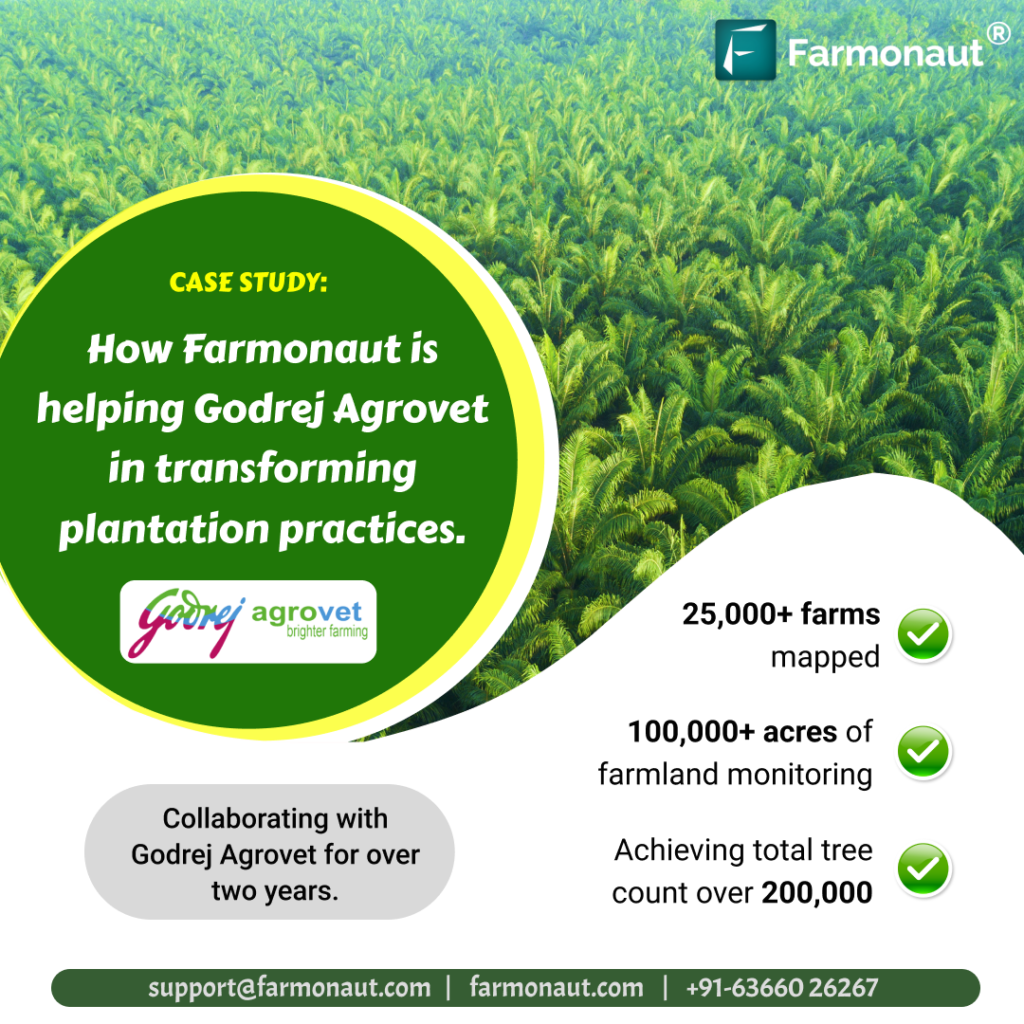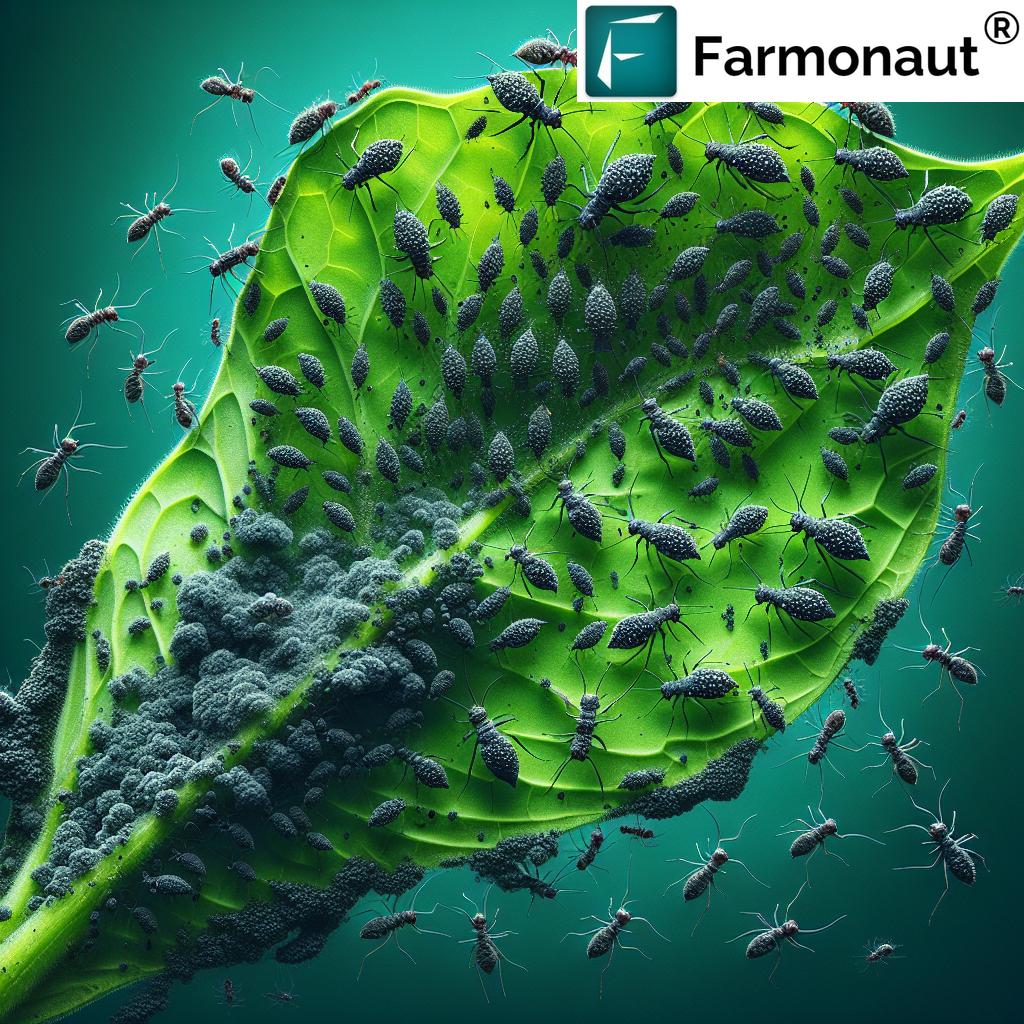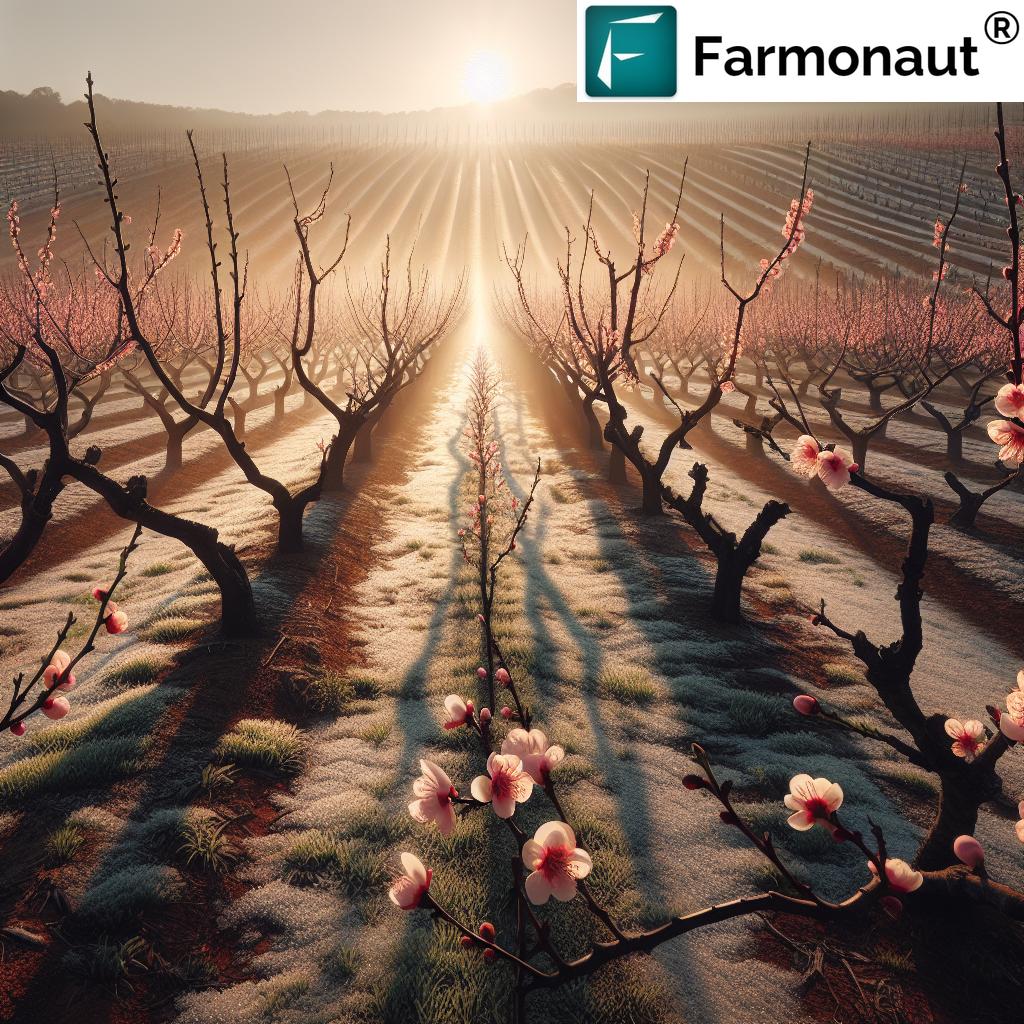Small Farmland for Sale: Top 7 Innovative Trends for 2026
Table of Contents
- The Rising Appeal of Small Farms
- Types of Small Farmland Available for Sale
- Innovative Technology & Equipment: The New Small Farm Era
- Top 7 Innovative Small Farmland Trends for 2026 (Comparison Table)
- Advantages and Economic Considerations for Small Farm Buyers
- The Future of Sustainable Small Farming: 2026 Onwards
- How Farmonaut Empowers Small Farmland Owners with Advanced Technologies
- Frequently Asked Questions
- Conclusion: Making Informed Decisions About Small Farmland for Sale
In 2025 and looking ahead to 2026, the growing demand for small farmland for sale is transforming the agricultural landscape. As more individuals and families seek to engage in sustainable agriculture, hobby farming, and local food production, small farms have moved into the spotlight. These manageable plots, generally ranging from 5 to 50 acres, offer a unique chance to leverage modern agricultural technologies, benefit from lower initial investment, and meet the growing interest in organic and locally produced food.
Whether you are looking for:
- irrigated farmland for sale
- small farm tractors for sale
- precise, data-driven farm management
understanding the current small farm landscape is crucial to making informed decisions and maximizing your investment for long-term productivity. Let’s explore the top 7 innovative trends reshaping small farmland opportunities for 2026—and see how you can optimize your farm for the future.
The Rising Appeal of Small Farms in 2026
The appeal of small farms—typically ranging from 5 to 50 acres—is rapidly growing. This shift is driven by consumers’ increasing desire for locally produced, sustainably grown food and by individuals’ search for a more meaningful rural lifestyle. As traditional, large-scale industrial farming faces criticism for its environmental footprint and lack of adaptability, small farms are becoming attractive due to their
- versatility for intensive, high-value crops
- potential for niche cultivation (such as microgreens, heritage vegetables, specialty livestock, or organic products)
- greater management control and flexibility
Unlike industrial agricultural operations, small farms empower owners to focus on quality over sheer volume, directly serve local markets, experiment with crop variety, and integrate technology at a manageable scale.
Consumers are gaining momentum towards healthy, sustainably produced food. The unique advantages of buying or managing a small farm for sale include:
- Lower initial investment and entry barrier—making farming accessible to more people
- Easier adoption of organic or regenerative agriculture practices
- Ability to respond quickly to market trends and test new crops or livestock
- Direct-to-consumer sales channels—enabling higher margins from local markets
Why Small Farmland Continues to Grow in Demand
The demand for small farmland for sale is expected to continue growing through 2026 and beyond. Urban professionals, retirees, young families, and entrepreneurs increasingly seek manageable rural acreage for:
- Hobby farming
- Organic food production
- CSA and farm-to-table businesses
- Educational or regenerative agriculture projects
Types of Small Farmland For Sale: Dryland vs. Irrigated
The current market often classifies small farmland for sale into two core categories:
- Dryland small farm plots (rain-fed, generally lower prices, but limited to certain crops and yield consistency)
- Irrigated small farms for sale (equipped with wells, pumps, or communal irrigation; these command higher prices due to yield reliability and wider crop opportunities)
Irrigated farmland for sale is highly sought after in traditionally arid regions, especially as integrated water management systems—like drip irrigation and rainwater harvesting—are now increasingly viable due to innovative technology and lower infrastructure costs.
Locating “Small Farms for Sale Near Me”
Today, finding small farms for sale near me is easier than ever, thanks to specialized agricultural real estate platforms that provide enhanced information including:
- Soil health and fertility data
- Water availability assessment
- Micro-climate conditions and flood/drought risk
For buyers, understanding this detailed data is crucial to select the best parcel for your farm goals—whether you want to pursue organic vegetable production, specialty grains, agroforestry, or livestock.
Specialized Real Estate Platforms: Empowering Informed Decisions
With the advent of agricultural-specific estate platforms, potential buyers are further empowered. Many of these platforms utilize agricultural data analytics, soil mapping, and satellite imagery to help you:
- Compare different plots and regions
- Assess historical crop yields and climate conditions
- Make data-driven decisions for long-term viability
Innovative Tech & Equipment: Small Farm Tractors for Sale and Smart Machinery
Modern small farm tractors for sale are transforming small-scale operations. These compact, fuel-efficient, and tailored machines are designed to handle tilling, planting, fertilizing, and harvesting—all within small plots or irregularly shaped fields.
Manufacturers now innovate aggressively, launching electric and hybrid tractors and equipping them with connectivity options:
- GPS guidance systems
- IoT-enabled performance tracking
- Remote diagnostics and updates
Even on a farm as small as 5 acres, you can leverage precision agriculture techniques for higher yields and reduced operational costs.
The 2026 market will see AI-driven automation and smart implements as standard features in the newest tractors, planters, sprayers, and harvesters built specifically for small farm sizes.
Benefits of Modern Small Farm Tractors
- Reduced labor time: Small, smart tractors make fieldwork efficient and offer scalability as your farm grows from 5 up to 50 acres.
- Optimized input usage: GPS and IoT functions minimize overlaps, wastage, and input costs.
- Enhanced precision: Consistency in planting and fertilization boosts yields—even on challenging terrains.
- Sustainability: Lower emissions and lighter machinery protect soil structure and health.
Integrating Data-Driven Farm Management Systems
Beyond equipment, satellite-based technologies are now essential for small farmland management. Platforms such as Farmonaut enable:
- On-demand crop monitoring through mobile and web apps
- Analysis of soil health, moisture patterns, and disease hotspots
- AI-driven recommendations for irrigation, fertilization, and timing of key farming operations
This data-driven approach empowers even the smallest farm owners to make better decisions about planting, harvesting, and resource allocation, reducing risks related to climate and market volatility.
Top 7 Innovative Trends in Small Farmland for Sale (2026)
Here are the seven leading trends shaping the future of small farm for sale acquisitions and sustainable agriculture in 2026 and beyond. This comparison table helps small farm buyers make informed decisions when considering available small farms for sale near them, based on cost, sustainability, technology, and adoption rate:
| Trend Name | Description | Estimated Adoption Rate (2026) | Estimated Cost Savings* | Technology Involved | Sustainability Impact |
|---|---|---|---|---|---|
| AI-Powered Irrigation Systems | Automation of water use via sensors, weather forecasts, and real-time crop needs. | 60% | Up to 35% water & input savings | IoT, Sensors, AI Analytics | High: Reduces water waste, energy use |
| Compact Smart Tractors | Electric or hybrid tractors optimized for small-scale, precision field operations. | 55% | 15–25% lower fuel & labor costs | Electric/Hybrid Tech, GPS, IoT | Medium: Reduces greenhouse emissions |
| Drone-Based Crop Monitoring | Use of drones for visual, multispectral crop/soil analysis and pest detection. | 40% | 10–20% input/applications saved | Drones, Satellite Imaging, AI | High: Minimizes chemical overuse |
| Regenerative Agriculture/Carbon Farming | Practices that rebuild soil health, including cover crops, minimal till, and biodiversity. | 48% | 20–30% long-term productivity gains | Soil Analysis, Satellite Data, AI | Very High: Improves ecosystem resilience |
| Blockchain Traceability | Tracking farm-to-fork authenticity and supply chain via blockchain records. | 35% | Reduced fraud, faster market access | Blockchain, Data Integration | Medium: Ensures ethical sourcing |
| On-Demand Satellite Monitoring | Remote updates on vegetation, soil moisture, and crop stress via web/mobile. | 60% | Significant: Avoids crop loss & unneeded input use | Satellite Imagery, AI, APIs | High: Reduces environmental impact |
| Community-Based Water Management | Collaboration on irrigation, rainwater harvesting, and infrastructure at village/cluster levels. | 42% | Shared resource costs, improved reliability | Water Networks, Smart Valves, Mobile Apps | Medium: Conserves local water sources |
*Data based on industry and platform insights, estimated for 2026.
A Closer Look at Each Trend
- AI-Powered Irrigation Systems:
- Automatically adjust watering schedules for each crop, saving water and boosting yield.
- Vital for irrigated small farms in arid regions where water efficiency is crucial.
- Compact Smart Tractors:
- Lightweight, energy-efficient, and custom-built for plots under 50 acres.
- Perfect for everything from tilling and planting to harvesting with high precision on small or awkwardly shaped fields.
- Drone-Based Monitoring:
- Drones gather detailed crop data, spot pests early, and help with input application—cutting chemical and fertilizer usage.
- Regenerative Agriculture/Carbon Farming:
- Builds resilience against climate change, improves soil health, and opens doors to carbon credit income opportunities.
- Blockchain Traceability:
- Enables transparent record-keeping for all crops and products, allowing small farm owners to meet new market and regulatory demands. Learn more about traceability for farm produce.
- On-Demand Satellite Monitoring:
- Platforms like Farmonaut enable real-time monitoring for crop health, soil moisture, and pest risks—boosting productivity and offering actionable advisory services.
- Community-Based Water Management:
- Supports irrigated small farm clusters via rainwater harvest and cluster-based irrigation, making formerly arid regions viable and more sustainable.
Advantages and Economic Considerations for Small Farmland Buyers
When considering small farmland for sale, prospective buyers in 2026 must evaluate both short-term benefits and long-term investment returns. Here’s why this segment remains attractive:
- Lower Initial Cost: Most small farm plots require less capital compared to large-scale farmland, making them accessible for new entrants.
- Flexible Management: Managing fewer acres allows owners to implement advanced technologies and sustainable practices rapidly.
- Proximity to Markets: Small farms are often situated closer to urban or peri-urban centers—ideal for direct-to-consumer sales.
- Higher Resilience: Irrigated farmland for sale offers a hedge against unpredictable climate and droughts, boosting yield consistency.
- Access to Government Incentives: Many regions provide incentives for organic, regenerative, and climate-smart agriculture practices on small farms.
However, irrigated farmland usually commands higher prices due to infrastructure requirements (wells, pipes, pumps, etc.) and higher market potential. Still, the investment is frequently justified by long-term price appreciation, risk reduction, and more stable yields across variable climates.
Small Farm Cost Structure: Things to Assess Before You Buy
- Soil health and restoration costs
- Access to reliable water sources
- Nearby transportation or market hubs
- Regulatory compliance and eligibility for incentives
- Equipment needs—from small tractors to irrigation pumps (increasingly electric or solar-powered)
Tip: Use real-time monitoring apps and satellite advisory platforms to track soil health, plan seasonal crop rotation, and increase operational efficiency.
The Future of Sustainable Small Farming: 2026 and Beyond
The management of small farms is being shaped by regenerative agriculture, climate-smart irrigation, and minimal chemical input approaches. As environmental, social, and economic sustainability drive new policies and consumer interest, small farms stand to gain momentum by:
- Building long-term soil health through cover cropping, composting, and crop rotation
- Leveraging blockchain traceability (learn more here) for authentic, ethical sales channels
- Adopting satellite-based decision-making with affordable platforms like Farmonaut
- Measuring and monetizing carbon footprint reductions using carbon credit programs (read about Farmonaut’s approach)
Government Incentives and Rural Development Opportunities
- Grants for new irrigation systems or greenhouse infrastructure
- Subsidies for organic certification on small farms
- Support for young and first-generation farmers
- Technical assistance to shift towards climate-smart practices
Potential Barriers for Small Farm Owners
- Upfront cost of advanced equipment (offset by government rebates and loan products)
- Learning curve for precision farming technologies
- Market access for niche crops (resolved via direct sales and online marketplaces)
For those considering crop loans or agricultural insurance, satellite-based verification makes proving crop health and disaster claims easier, faster, and more reliable—see how Farmonaut supports loan and insurance services for small farms.
How Farmonaut Empowers Small Farmland Owners with Advanced Technologies
At Farmonaut, our mission is to democratize access to satellite-driven insights and data-powered decision-making—especially for small and medium-scale farms seeking to thrive in the future of sustainable agriculture.
We make advanced, affordable satellite technology accessible through mobile apps, web platforms, and APIs, supporting:
- Automated crop health and soil monitoring
- AI-based agricultural advisory services for irrigation, fertilization, and harvest planning
- Blockchain-based traceability tools—ensuring transparency and compliance from farm to table
- Real-time resource and fleet management—track equipment use, reduce operational costs, and scale operations using our fleet management module (explore details)
- Environmental monitoring, including carbon footprint assessment (key to future market and incentive programs)
Our API and developer documentation (get started with Farmonaut’s API) allow integration into any farm ERP or decision-support system, making remote and scalable management possible for everyone—from a 5-acre local vegetable grower to an emerging 50-acre specialty farmland owner.
Affordable Satellite Subscriptions for Small Farms
Empower your small farm with real-time satellite monitoring, AI-driven advisory, and blockchain data tools—all with transparent, flexible subscriptions:
Frequently Asked Questions – Small Farmland for Sale & Modern Trends
1. What makes small farmland for sale a smart investment in 2026?
Small farmland for sale is a smart investment due to its lower initial cost, adaptability to new technologies, and growing demand for local, sustainably-produced food. Innovations in irrigation, equipment, and data-driven management make it easier for individuals and families to operate profitably and sustainably on plots between 5 and 50 acres.
2. How can I determine whether irrigated farmland for sale or dryland is right for me?
Irrigated farmland for sale offers yield stability, greater crop variety, and resiliency against drought but comes at a higher price due to required infrastructure. Dryland plots are initially cheaper but more exposed to weather volatility. Reviewing soil health, water availability, and your intended crops with a data-driven platform is crucial before making a decision.
3. What are the advantages of buying a small farm tractor instead of hiring labor?
Small farm tractors for sale today are compact, efficient, and increasingly affordable. They reduce dependence on manual labor, cut operational costs, and enable precision farming even in tight or uneven fields. Modern smart tractors also help with sustainable practices and reduce emissions compared to traditional machinery.
4. How can Farmonaut help me manage a small farm and improve productivity?
At Farmonaut, we provide real-time satellite crop monitoring, AI-based advisory, and blockchain traceability tools. These enable small farm owners to make better decisions, reduce operational costs, improve yields, and tap into incentives like carbon credits. APIs and mobile apps give you 24/7 access and integration options for seamless management.
5. What should I look for in a small farmland parcel before purchase?
Before buying a small farm plot, check soil quality, water source reliability, market access, and eligibility for grants/incentives. Using specialized agri-platforms with satellite insights gives you the edge in making an informed, future-ready choice.
6. How can I monitor or verify farm data remotely or via my own system?
Farmonaut’s API (see API details) and developer docs let you plug real-time agricultural data into any farm management or analytics system for handsfree monitoring of soil, crops, water, and more.
7. Where can I get more info about integrating carbon footprint monitoring on my small farm?
You can explore Farmonaut’s Carbon Footprinting solutions for details on carbon accounting, climate compliance, and green premium access.
Conclusion: Making Informed Decisions About Small Farmland for Sale in 2026
Small farmland for sale in 2026 offers a compelling path for individuals, families, and new-age entrepreneurs to engage in sustainable agriculture with manageable risk, modern technology, and strong long-term value.
- Leverage real-time insights from satellite & IoT platforms to optimize soil, crop, and water management—using affordable apps and APIs.
- Focus on regenerative, climate-resilient practices that future-proof your farm and open doors to incentives, carbon credits, and the green food premium market.
- Utilize data-driven tools to keep your operational costs low, maximize yield, and ensure your farm meets the latest sustainability and regulatory requirements.
- Choose plots equipped with or suitable for AI-powered irrigation, compact tractors, and smart resource management systems for the best returns in the current and future agriculture landscape.
Making informed, data-backed decisions is the key to success in tomorrow’s agricultural world. Tap into new technologies—from small farm tractors to satellite monitoring—and unleash the true potential of your land.












